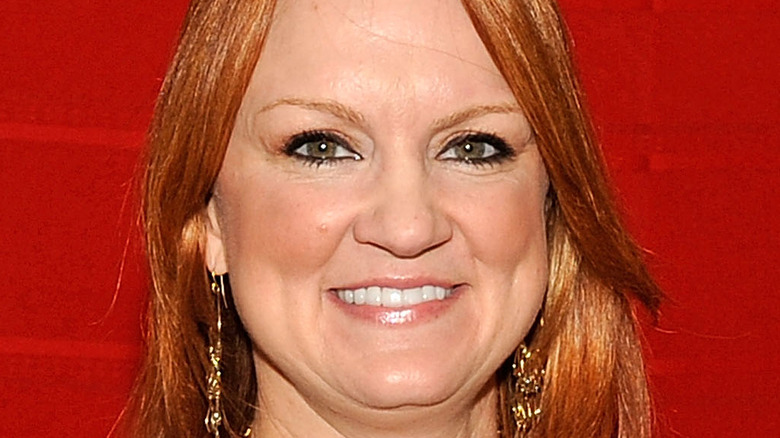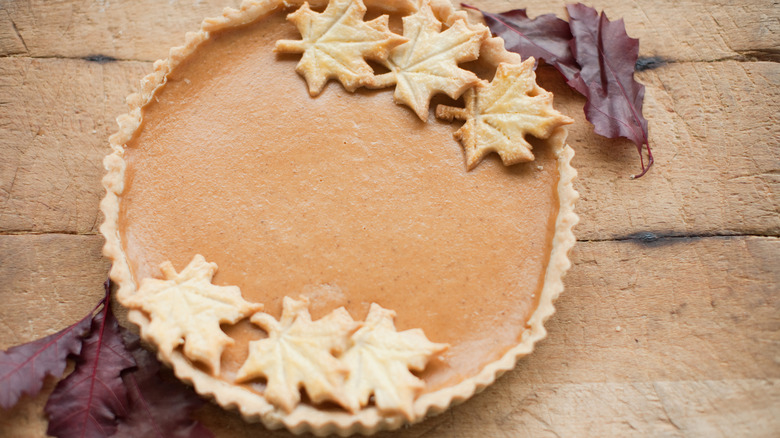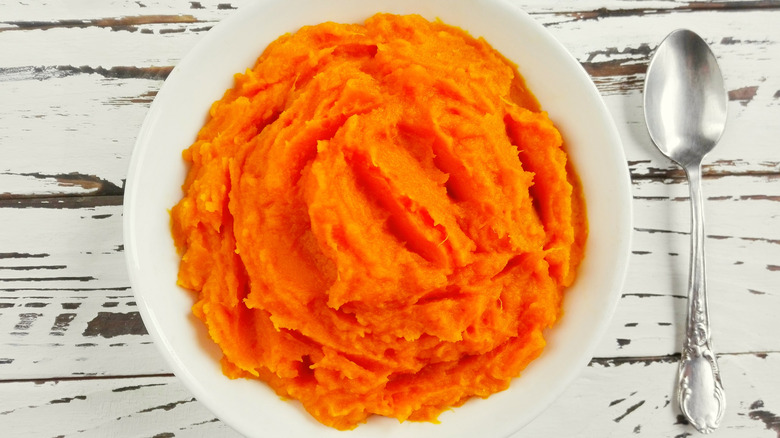The Pumpkin Puree Shortcut Ree Drummond Can't Stop Using
We may receive a commission on purchases made from links.
Pumpkin obsession in America begins around September when Halloween decorations emerge and the pumpkin spice latte springs flow. Pumpkin pie takes its rightful place on the dessert throne from Halloween to late December, echoing Johnny Mathis' warm sentiments about it in his 1958 recording of "Sleigh Ride." But in fact, humans have been into pumpkins for millennia — they were cultivated by the native peoples of the Americas even before beans and corn (per History). It makes sense since these members of the gourd family are high in vitamin A, vitamin C, and minerals, plus the carotenoid beta carotene which gives them that cheery orange color (per Healthline).
But pumpkins are a labor of love. As crops, they need a lot of nutrients, and as pies, they need many ingredients. Perhaps you're confident with your homemade butter crust and pumpkin spice blend, but the filling has let you down. Pumpkin pie is a type of custard pie, says MasterClass, equipped with an eggy, liquid custard filling that must cook and cool completely to become solid and sliceable. A sloshing, squashy sea is the last thing you want to see when you open that oven. That and over-doneness. With pumpkin pie, so much can happen between earnest craving and execution. Fortunately, chef Ree Drummond gives us permission to use an easy shortcut.
Ree Drummond prefers canned pumpkin for pies
In an interview with Taste of Home, the Pioneer Woman divulged that she finds canned pumpkin to be culinarily superior to fresh pumpkin puree. The premade stuff has more of a consistent water content and is the basis for most pumpkin pie recipes you'll encounter, Drummond told Taste of Home. While home bakers can certainly create their own pumpkin puree, it's a lengthy process. First, you need to acquire a tasty pumpkin — and not all varieties are suitable (per Southern Living). Plus, each individual pumpkin differs in terms of taste, texture, and moisture. Processing a pumpkin makes a big mess of the kitchen and it takes a while to cook.
In comparison, canned pumpkin puree is convenient and easy to use, requiring far less effort than its from-scratch counterpart. The most popular brand, Libby's, contains only 100% pumpkin (per Nestlé), although the Dickinson or crookneck pumpkin used is closer to a butternut squash than a familiar jack o'lantern, according to The Atlantic. Controversy aside, making a pumpkin pie with canned pumpkin is as simple as following the recipe on the label and there's no need to tangle with pumpkin innards and seeds and such. Canned pumpkin is also available year-round and shelf-stable, making it a practical pantry ingredient for a variety of meals. It's more than just dessert.
Other ways to use canned pumpkin
Ree Drummond does love making her own pumpkin puree, but the chef is realistic and at times relies on convenience. In fact, one blog post from The Pioneer Woman offers 31 delicious recipes that call for canned pumpkin and you'll find the likes of smoothies, baked goods, and savory dishes.
Popular pumpkin desserts aside, you can use canned pumpkin as a basis for rich, comforting foods like pumpkin soup, chili, or a hearty curry. Canned pumpkin is also an ingredient you'll find in pumpkin cream cheese dip and the boozy Bourbon Pumpkin Pie Milkshake. It does make a great baby food or addition to your pet's diet, says MasterClass. Bonus: If Fido has an upset tummy, The Vet Practice says canned pumpkin can soothe it as pumpkin is packed with fiber.
The takeaway here is that keeping a couple of cans of pumpkin puree in your pantry is a good idea because you never know when it will come in handy.


